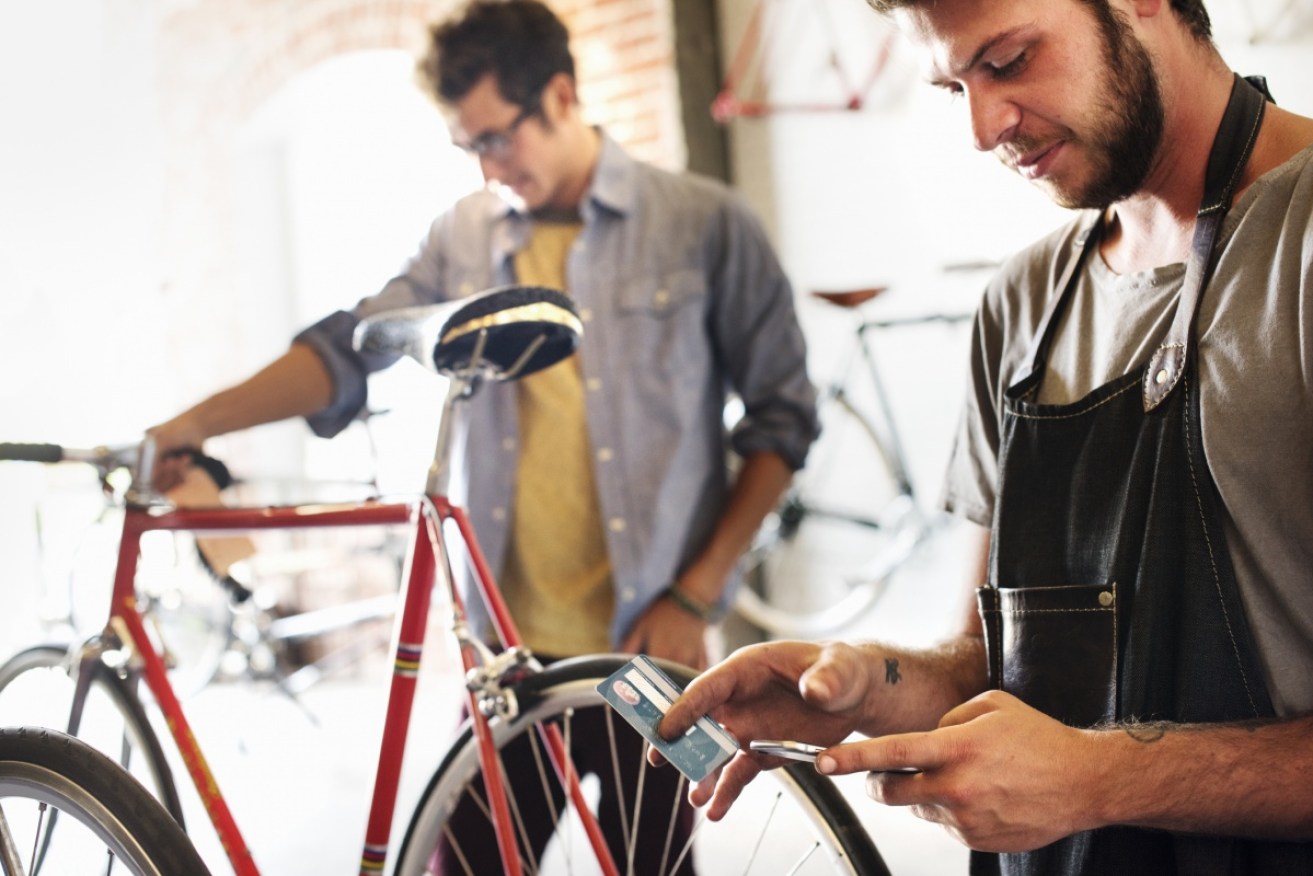Australia’s path to a cashless society is accelerating and inevitable


Cash payments under $10,000 almost halved between 2007 and 2016. Photo: Getty
Last week, three out of four Swedes didn’t use cash to buy anything. The country is going cashless so fast, it’s starting to worry the central bank.
Sweden is the world’s most cashless country. But we’re catching up.
The word is we’re five or six years behind the Swedes and closing. Australian consumers’ use of cash has already more than halved in the past decade.
Where once it was common to see “cash only” signs in shops, “no cash” warnings are on the rise. It happened to me on Saturday night at the rugby – the car park only accepted plastic.
ABC Sydney radio’s whimsical afternoon host, James Valentine, caused me to go in search of numbers to check his observation that cash was disappearing.
Valentine realised he had pretty much stopped bothering to carry old-fashioned money and that it had become a big issue for the Big Issue – sales are falling as more people going cashless. Fewer potential customers have what it takes to buy the magazine from street vendors.
The international experience says vendors will need machines to accept plastic, which can be a bit of a technological challenge for the homeless. At the extreme, there’s the story of the Beijing beggar with a QR code.
The tax man loves the idea of Australia going cashless. Once a transaction is recorded, it can be found and taxed. Indeed, this year’s budget included the announcement that cash payments of more than $10,000 would be banned.
The trouble arises primarily for people who haven’t taken to online/mobile/embedded-chip-in-your-ear-or-whatever banking – primarily the old, but also those on society’s fringes.
This is what’s worrying the Swedes, that older people will be excluded from parts of the economy. The central bank is concerned banks and merchants are getting ahead of the population in ditching cash.
It also has warned about the danger of a cashless society in the event of “war or other catastrophe”.
Recent local bank computer failures have already shown up the problem of being too reliant on money you can’t hold in your hand.
Beyond the anecdotes, up-to-date hard data on the demise of cash transactions here is surprisingly rare. The best available is a survey the Reserve Bank conducts every three years that charts the folding stuff’s fall.
When Kevin Rudd was elected prime minister in 2007, 69 per cent of consumer payments under $10,000 were by cash. When Julia Gillard won the Lodge keys in 2010, it was 62 per cent. Tony Abbott’s election coincided with a sharp fall to 47 per cent. For Malcolm Turnbull in 2016, it was down to just 37 per cent.
Given the trend, it’s a reasonable guess we’d be barely holding 30 per cent today.
Another indication of cash’s decline is ATM activity. In April, we collectively went to the ATM 47,286,000 times and withdrew $10.45 billion. In April 2008, we punched in our PINs 70,581,000 times to withdraw $12.14 billion.
As cash has fallen, plastic’s share of consumer payments has doubled. Debit and credit cards had 26 per cent of our business in 2007 and 52 per cent in 2016.
By value rather than number, the Reserve Bank estimates we used plastic to pay for $250 billion worth of stuff in 2007 and $496 billion in 2016. Cash payments over that time went from $218 billion to $162 billion.
And it’s early days here for both the mobile phone systems that rule the cashless register in China, and the Australia’s own New Payments Platform for simplified real-time transfers.
As for cheques – I suppose I should explain: They were things that came in a book and you wrote out the payee’s name and amount and … oh, never mind. Their use in 2016 was a fifth of what it was in 2007 and it wasn’t all that much then.
Most curiously, while we’re using cash less, we are keeping more of it somewhere – perhaps under the bed. The value of notes in circulation has been rising steadily by about six per cent a year.
The RBA suspects foreign visitors and migrant communities might be accounting for much of the recent rise.
Furthermore, the 2016 survey found we were carrying a little more cash in our wallets – $101 on average – even though we’re using less. Looks like they didn’t survey James Valentine.








